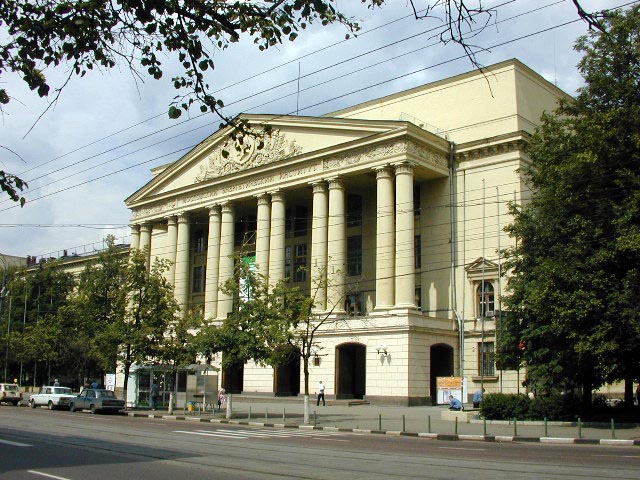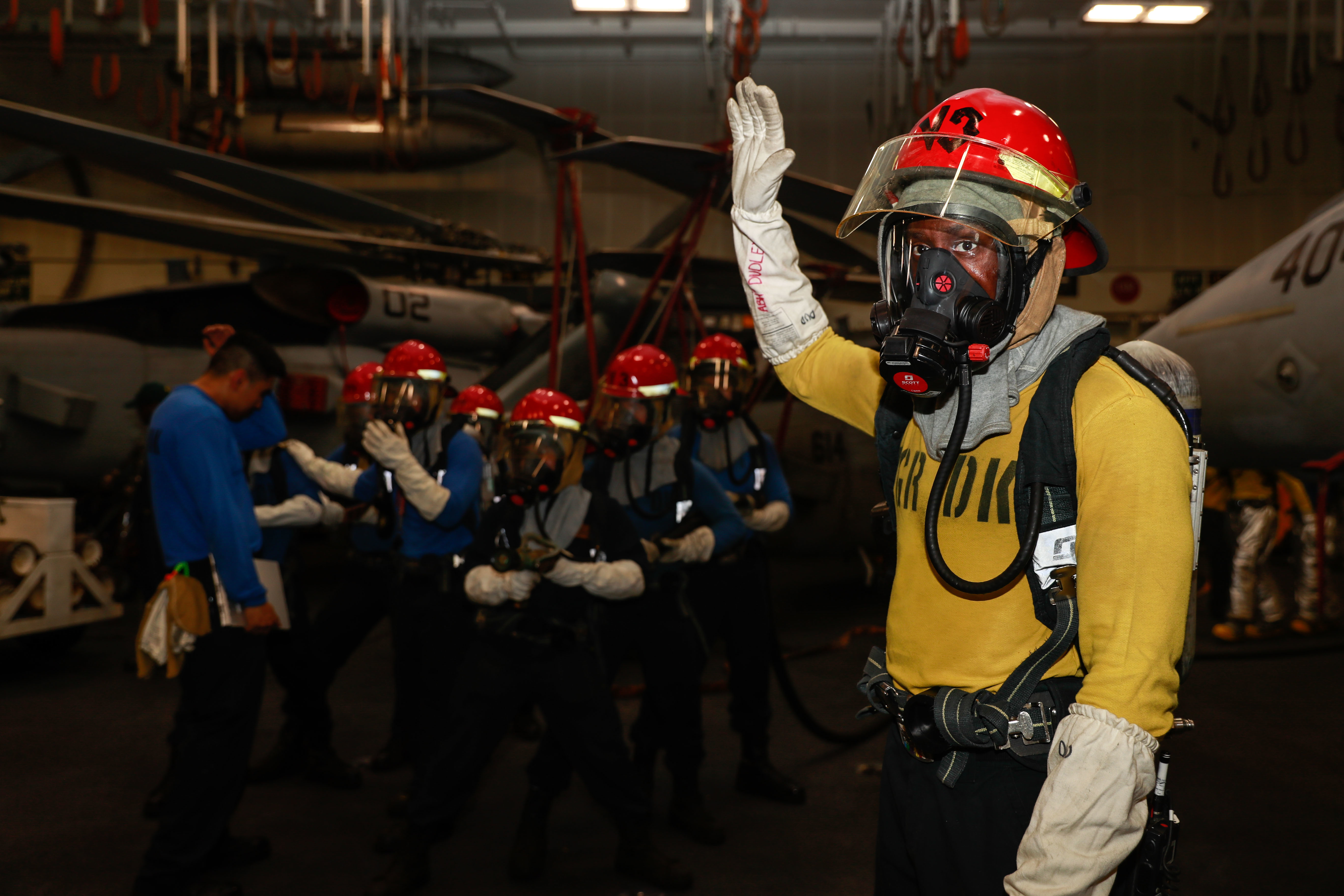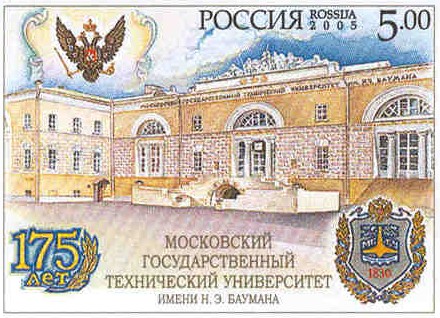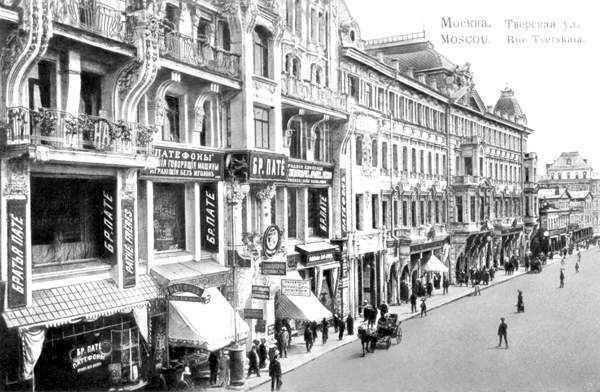|
Valeriya Golubtsova
Valeriya Alexeyevna Golubtsova (15 May 1901 in Nizhny Novgorod — 1 October 1987 in Моscow) was a scientist who was the director of the Moscow Power Engineering Institute from 1943 to 1952. She was the wife of Georgy Malenkov. Biography Golubtsova was born in Nizhny Novgorod in the family of a teacher in the cadet corps, State Councilor Alexei Golubtsov (1852–1924), and Olga Nevzorova, who was a member of an old noble family. Nevzorova's older sisters were the famous "Nevzorov sisters" (Zinaida, Sophia, and Augustine) — Vladimir Lenin's comrades-in-arms in Marxist circles back in the 1890s. Zinaida married Gleb Кrzhizhanovky in 1899, who in the 1920s headed the GOELRO Commission. The Golubtsov family raised five children: Lyudmila, Valeriya, Roman, Vyacheslav (later Professor of the Moscow Power Engineering Institute, corresponding member of the Аcademy of Sciences of the Soviet Union), and Elena. In 1917, Golubtsova graduated from a gym in Nizhny Novgorod, and t ... [...More Info...] [...Related Items...] OR: [Wikipedia] [Google] [Baidu] |
Nizhny Novgorod
Nizhny Novgorod ( ; rus, links=no, Нижний Новгород, a=Ru-Nizhny Novgorod.ogg, p=ˈnʲiʐnʲɪj ˈnovɡərət ), colloquially shortened to Nizhny, from the 13th to the 17th century Novgorod of the Lower Land, formerly known as Gorky (, ; 1932–1990), is the administrative centre of Nizhny Novgorod Oblast and the Volga Federal District. The city is located at the confluence of the Oka and the Volga rivers in Central Russia, with a population of over 1.2 million residents, up to roughly 1.7 million residents in the urban agglomeration. Nizhny Novgorod is the sixth-largest city in Russia, the second-most populous city on the Volga, as well as the Volga Federal District. It is an important economic, transportation, scientific, educational and cultural center in Russia and the vast Volga-Vyatka economic region, and is the main center of river tourism in Russia. In the historic part of the city there are many universities, theaters, museums and churches. The city w ... [...More Info...] [...Related Items...] OR: [Wikipedia] [Google] [Baidu] |
Turkestan Front
The Turkestan Front () was a front of the Red Army during the Russian Civil War, which was formed on the territory of Turkestan Military District by Order of the Republic of Turkestan on February 23, 1919. It was formed a second time by the directive of the Commander-in-Chief on August 11, 1919 on the territory of Samara, Astrakhan, Orenburg Province and Ural region by renaming the Southern group of armies from the Eastern Front of the RSFSR. Its headquarters were in Samara and by 1920 the Turkestan Front counted some 114,000 soldiers. Operations In May–July 1919 troops of the Turkestan Front defeated the Turkestan Army, an armed Formation of the AFSR in the Caspian region. In 1919, the troops of the Turkestan Front defeated the Southern Army of Admiral Kolchak, broke through the blockade of Turkestan (September 13, 1919) and joined with the troops of the Turkestan Soviet Republic. Until mid-October 1919, the Turkestan Front fought against the Ural Cossack Army of General ... [...More Info...] [...Related Items...] OR: [Wikipedia] [Google] [Baidu] |
Boris Chertok
Boris Yevseyevich Chertok (russian: link=no, Бори́с Евсе́евич Черто́к; – 14 December 2011) was a Russian electrical engineer and the control systems designer in the Soviet Union's space program, and later found employment in Roscosmos. Major responsibility under his guidance was primarily based on computerized control system of the Russian missiles and rocketry system, and authored the four-volume book ''Rockets and People''– the definitive source of information about the history of the Soviet space program. From 1974, he was the deputy chief designer of the S.P. Korolev Rocket and Space Corporation Energia, the space aircraft designer bureau which he started working for in 1946. He retired in 1992. Personal life Born in Łódź (modern Poland), his family moved to Moscow when he was aged 3. Starting from 1930, he worked as an electrician in a metropolitan suburb. Since 1934, he was already designing military aircraft in Bolkhovitinov design bure ... [...More Info...] [...Related Items...] OR: [Wikipedia] [Google] [Baidu] |
Anatoly Petrakovsky
Anatoly Iosifovich Petrakovsky (Russian: Анатолий Иосифович Петраковский; 28 December 1901 – 3 September 1969) was a Ukrainian Soviet Army major general and Hero of the Soviet Union. After joining the Red Army in 1922, Petrakovsky became an officer and rose through the ranks. On the eve of the Winter War, he was a battalion commander in the 13th Rifle Division. Petrakovsky was awarded the title Hero of the Soviet Union and the Order of Lenin for his leadership of the battalion. After Operation Barbarossa, he became commander of the 395th Rifle Division. He led the division during the Battle of Rostov and the Battle of Voronezh but was relieved of command due to a "systemic failure to comply with orders". In August 1943, Petrakovsky became commander of the 57th Rifle Corps but lost command of the corps and was sent to hospital to receive treatment for an illness. After graduating from the Military Academy of the General Staff, he was appointed d ... [...More Info...] [...Related Items...] OR: [Wikipedia] [Google] [Baidu] |
Dmitry Zhimerin
Dmitri (russian: Дми́трий); Church Slavic form: Dimitry or Dimitri (); ancient Russian forms: D'mitriy or Dmitr ( or ) is a male given name common in Orthodox Christian culture, the Russian version of Greek Demetrios (Δημήτριος ''Dēmētrios'' ). The meaning of the name is "devoted to, dedicated to, or follower of Demeter" (Δημήτηρ, ''Dēmētēr''), "mother-earth", the Greek goddess of agriculture. Short forms of the name from the 13th–14th centuries are Mit, Mitya, Mityay, Mit'ka or Miten'ka (, or ); from the 20th century (originated from the Church Slavic form) are Dima, Dimka, Dimochka, Dimulya, Dimusha etc. (, etc.) St. Dimitri's Day The feast of the martyr Saint Demetrius of Thessalonica is celebrated on Saturday before November 8 ld Style October 26 The name day (именины): October 26 (November 8 on the Julian Calendar) See also: Eastern Orthodox liturgical calendar. The Saturday before October 26/November 8 is called Demetrius Saturd ... [...More Info...] [...Related Items...] OR: [Wikipedia] [Google] [Baidu] |
Alexei Pavlenko
Alexey, Alexei, Alexie, Aleksei, or Aleksey (russian: Алексе́й ; bg, Алексей ) is a Russian and Bulgarian male first name deriving from the Greek ''Aléxios'' (), meaning "Defender", and thus of the same origin as the Latin Alexius. Alexey may also be romanized as ''Aleksei'', ''Aleksey'', ''Alexej'', ''Aleksej'', etc. It has been commonly westernized as Alexis. Similar Ukrainian and Belarusian names are romanized as Oleksii (Олексій) and Aliaksiej (Аляксей), respectively. The Russian Orthodox Church uses the Old Church Slavonic version, Alexiy (Алексiй, or Алексий in modern spelling), for its Saints and hierarchs (most notably, this is the form used for Patriarchs Alexius I and Alexius II). The common hypocoristic is Alyosha () or simply Lyosha (). These may be further transformed into Alyoshka, Alyoshenka, Lyoshka, Lyoha, Lyoshenka (, respectively), sometimes rendered as Alesha/Aleshenka in English. The form Alyosha may be u ... [...More Info...] [...Related Items...] OR: [Wikipedia] [Google] [Baidu] |
Lefortovo Mei , a station on the Moscow Metro
{{Disambiguation ...
Lefortovo may refer to: *Lefortovo District, a district in South-Eastern Administrative Okrug of Moscow, Russia * Lefortovo Prison, a prison in Moscow, Russia *Lefortovo Tunnel, a road tunnel in Moscow, Russia *Lefortovo Hill, one of the seven hills of Moscow, Russia *Lefortovo (Moscow Metro) Lefortovo (russian: Лефортово) is a station on the Bolshaya Koltsevaya line of the Moscow Metro. The station was opened on 27 March 2020 as part of Nekrasovskaya line extension. Name The Station is named for the Lefortovo District of Mo ... [...More Info...] [...Related Items...] OR: [Wikipedia] [Google] [Baidu] |
General Quarters
General quarters, battle stations, or action stations is an announcement made aboard a naval warship A warship or combatant ship is a naval ship that is built and primarily intended for naval warfare. Usually they belong to the armed forces of a state. As well as being armed, warships are designed to withstand damage and are usually faster a ... to signal that all hands (everyone available) aboard a ship must go to battle stations (the positions they are to assume when the vessel is in combat) as quickly as possible. According to ''The Encyclopedia of War'', formerly " naval service, the phrase 'beat to quarters' indicated a particular kind of drum roll that ordered sailors to their posts for a fight where some would load and prepare to fire the ship's guns and others would arm with muskets and ascend the rigging as sharpshooters in preparation for combat." Aboard U.S. Navy vessels, the following announcement would be made using the vessel’s public address system ... [...More Info...] [...Related Items...] OR: [Wikipedia] [Google] [Baidu] |
Samara
Samara ( rus, Сама́ра, p=sɐˈmarə), known from 1935 to 1991 as Kuybyshev (; ), is the largest city and administrative centre of Samara Oblast. The city is located at the confluence of the Volga and the Samara (Volga), Samara rivers, with a population of over 1.14 million residents, up to 1.22 million residents in the urban agglomeration, not including Novokuybyshevsk, which is not conurbated. The city covers an area of , and is the List of cities and towns in Russia by population, eighth-largest city in Russia and tenth agglomeration, the Volga#Biggest cities on the shores of the Volga, third-most populous city on the Volga, as well as the Volga Federal District. Formerly a closed city, Samara is now a large and important social, political, economic, industrial, and cultural centre in Russia and hosted the European Union—Russia Summit in May 2007. It has a continental climate characterised by hot summers and cold winters. The life of Samara's citizens has always been in ... [...More Info...] [...Related Items...] OR: [Wikipedia] [Google] [Baidu] |
Eastern Front (World War II)
The Eastern Front of World War II was a Theater (warfare), theatre of conflict between the European Axis powers against the Soviet Union (USSR), Polish Armed Forces in the East, Poland and other Allies of World War II, Allies, which encompassed Central Europe, Eastern Europe, Northern Europe, Northeast Europe (Baltic states, Baltics), and Southeast Europe (Balkans) from 22 June 1941 to 9 May 1945. It was known as the Great Patriotic War (term), Great Patriotic War in the Soviet Union – and still is in some of its successor states, while almost everywhere else it has been called the ''Eastern Front''. In present-day German and Ukrainian historiography the name German-Soviet War is typically used. The battles on the Eastern Front of the Second World War constituted the largest military confrontation in history. They were characterised by unprecedented ferocity and brutality, wholesale destruction, mass deportations, and immense loss of life due to combat, starvation, expos ... [...More Info...] [...Related Items...] OR: [Wikipedia] [Google] [Baidu] |
Bauman Moscow State Technical University
The Bauman Moscow State Technical University, BMSTU (russian: link=no, Московский государственный технический университет им. Н. Э. Баумана (МГТУ им. Н. Э. Баумана)), sometimes colloquially referred to as the Bauman School or Baumanka (russian: link=no, Ба́уманка) is a public technical university (Polytechnic) located in Moscow, Russia. Bauman University a Russian technical university offering B.S., M.S. and PhD degrees in various engineering fields and applied sciences. History Bauman University is the second oldest educational institution in Russia after Lomonosov Moscow State University (1755). In 1763, the Russian empress Catherine II founded the Educational Imperial House. On October 5 1826 the Dowager Empress Maria Feodorovna issued a decree to establish "great workshops for different crafts with bedrooms, a dining room, etc." as a part of the Moscow Foundling Home in the German Quarte ... [...More Info...] [...Related Items...] OR: [Wikipedia] [Google] [Baidu] |
Tverskaya Street
Tverskaya Street ( rus, Тверская улица, p=tvʲɪrˈskajə ˈulʲɪt͡sə), known between 1935 and 1990 as Gorky Street (russian: улица Горького), is the main radial street in Moscow. The street runs Northwest from the central Manege Square in the direction of Saint Petersburg and terminates at the Garden Ring, giving the name to Tverskoy District. The route continues further as First Tverskaya-Yamskaya Street, Leningradsky Avenue and Leningradskoye Highway. History and architecture Middle Ages to 18th century Tourists are told that Tverskaya Street existed as early as the 12th century. Its importance for the medieval city was immense, as it connected Moscow with its superior, and later chief rival, Tver. At that time, the thoroughfare crossed the Neglinnaya River. The first stone bridge across the Neglinnaya was set up in 1595. In the 17th and 18th centuries, Tverskaya Street was renowned as the centre of Moscow's social life. The nobility co ... [...More Info...] [...Related Items...] OR: [Wikipedia] [Google] [Baidu] |







